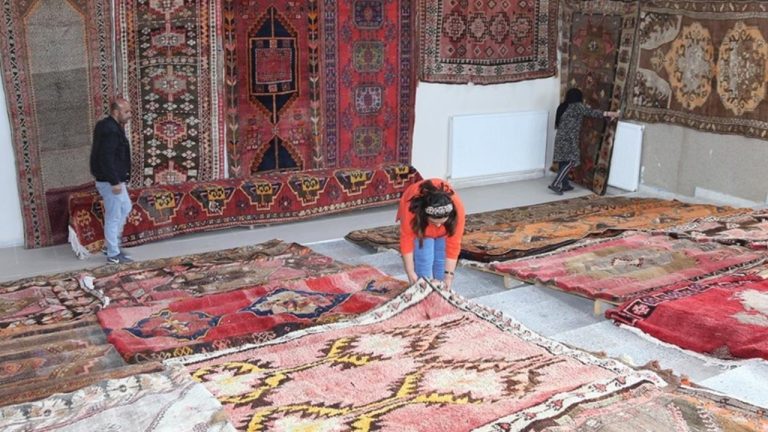Turkish Handicrafts Carpet: Turkey is renowned for its rich history and cultural heritage, and one of the most captivating aspects of this heritage is its traditional handicrafts. Among these, Turkish carpets stand out for their intricate designs, high-quality materials, and centuries-old weaving techniques. In this blog post, we will delve into the fascinating world of traditional Turkish carpets, exploring their history, types, and the craftsmanship behind their creation.
The Rich History of Turkish Handicrafts Carpet
The art of carpet weaving in Turkey dates back to ancient times, with roots tracing back to the nomadic tribes of Central Asia. These early weavers created carpets not only for their practical use as floor coverings but also as symbols of wealth and status. Over the centuries, the techniques and designs evolved, influenced by various civilizations, including the Persians, Byzantines, and Ottomans.
During the Ottoman Empire, Turkish carpet weaving reached its zenith. Sultans and nobility commissioned elaborate carpets, which became prized possessions and valuable trade items. The city of Istanbul emerged as a major center for carpet production, attracting skilled weavers from across the empire.
Types of Turkish Handicrafts Carpet
Turkish carpets come in a variety of styles, each reflecting the unique cultural and artistic influences of the region in which they were produced. Here are some of the most notable types:
1. Hereke Carpets
Hereke carpets, originating from the town of Hereke near Istanbul, are renowned for their exceptional quality and intricate designs. Woven from silk, wool, or a combination of both, Hereke carpets often feature floral patterns and motifs inspired by Ottoman palaces. They are highly sought after by collectors and interior designers worldwide.
2. Oushak Carpets
Oushak (or Uşak) carpets hail from the town of Uşak in western Turkey. Known for their large, bold designs and soft color palettes, Oushak carpets have a distinct, timeless appeal. They are often used in contemporary interior design to add a touch of elegance and warmth.
3. Anatolian Kilims
Kilims are flat-woven carpets traditionally made by the nomadic tribes of Anatolia. Unlike pile carpets, kilims are characterized by their flat, tapestry-like weave. They feature geometric patterns and vibrant colors, reflecting the tribal heritage and cultural symbolism of the weavers. Kilims are versatile and can be used as floor coverings, wall hangings, or even as furniture throws.
Traditional Turkish Handicrafts: Carpets
Traditional Turkish carpets are more than just floor coverings; they are a testament to the rich history and cultural heritage of Turkey. From the intricate designs of Hereke carpets to the bold patterns of Anatolian kilims, each piece tells a story of artistry and craftsmanship. By preserving and celebrating these timeless traditions, we can ensure that the beauty and heritage of Turkish carpets continue to be appreciated by future generations.
For more insights into Turkish handicrafts and cultural heritage, stay tuned to our blog and join us on a journey through the fascinating world of traditional arts and crafts.
During the Ottoman Empire, Turkish carpet weaving reached its zenith. Sultans and nobility commissioned elaborate carpets, which became prized possessions and valuable trade items. The city of Istanbul emerged as a major center for carpet production, attracting skilled weavers from across the empire.

